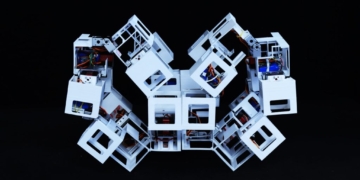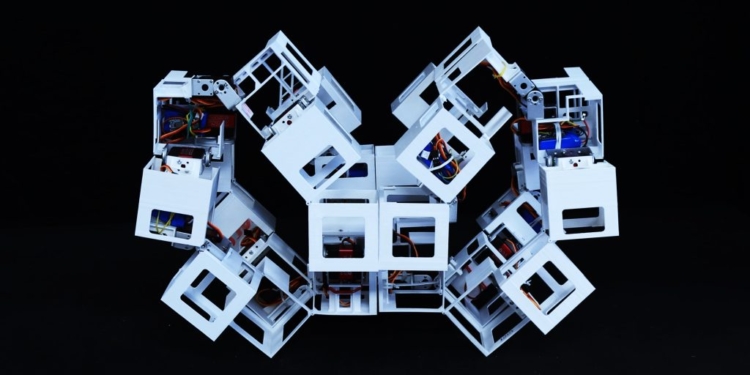

The North Carolina State University research team put together hollow, plastic cubes using a 3D printer.
They assembled 36 of them with rotating hinges; some hinges were fixed with metal pins, while others were activated wirelessly with a motor.
The team was able to move the cubes into more than 1,000 shapes using only three active motors.
The shapes included tunnel-like structures, bridge-like structures, and even multi-story architectures.
The untethered transformer bots can move forward, backward, and sideways – without feet – merely by controlling the ways the structure’s shape changes.
The bots can also transform relatively quickly from flat, or fully open, to a box-like larger cube, or fully closed.

The bots also can carry a load of about three times their weight, according to the research team.
And they are attempting to make the transformer bots even better.
“We want to make a more robust structure that can bear larger loads,” said Dr. Yanbin Li, a co-author.
“If we want a car shape, for example, how do we design the first structure that can transform into a car shape?
“We also want to test our structures with real-world applications like space robots,” he added.
Co-first author Dr. Antonio Di Lallo said: “We think these can be used as deployable, configurable space robots and habitats.
“It’s modular, so you can send it to space flat and assemble it as a shelter or as a habitat, and then disassemble it.”
Yin added: “For users, it needs to be easy to assemble and to control.”
Produced in association with SWNS Talker























